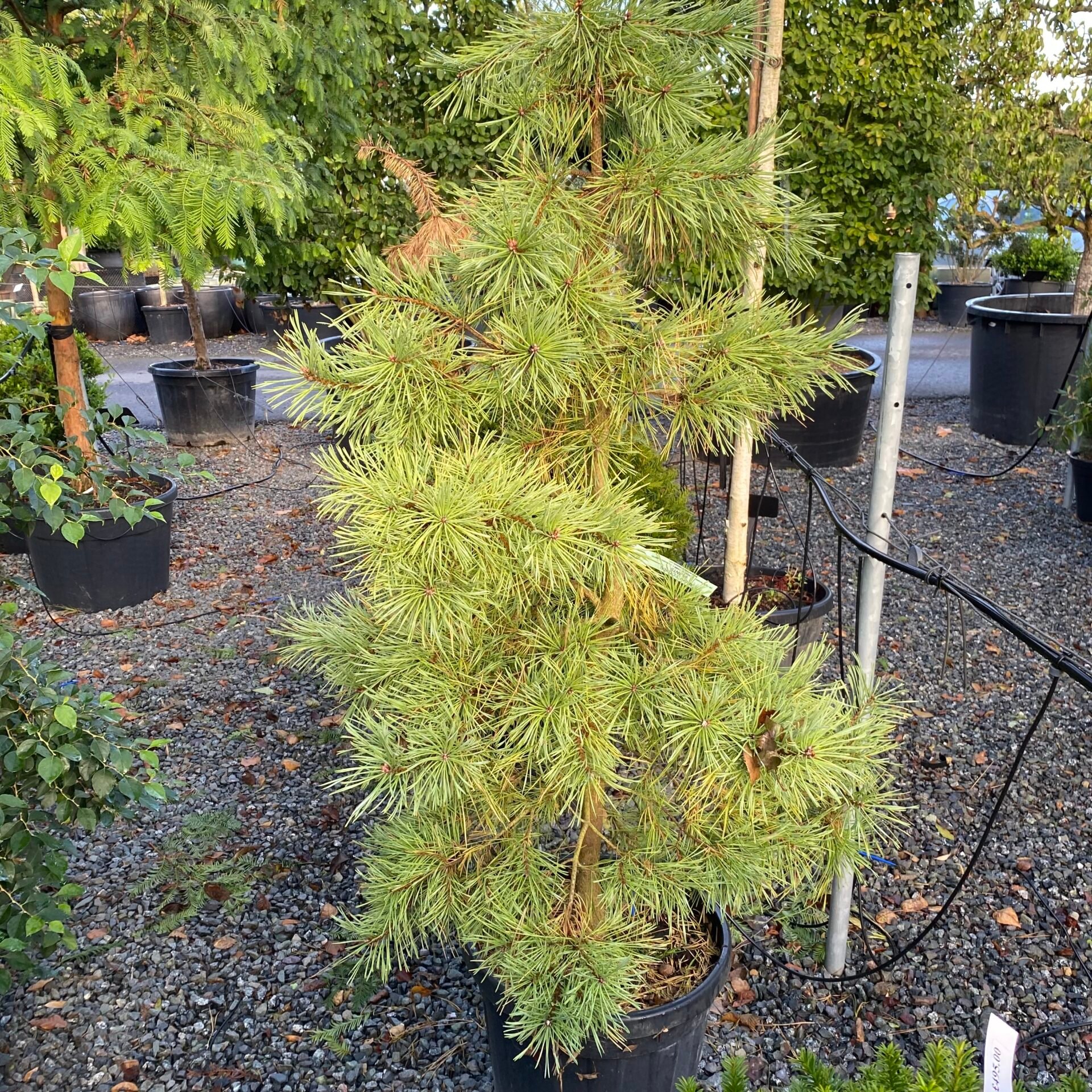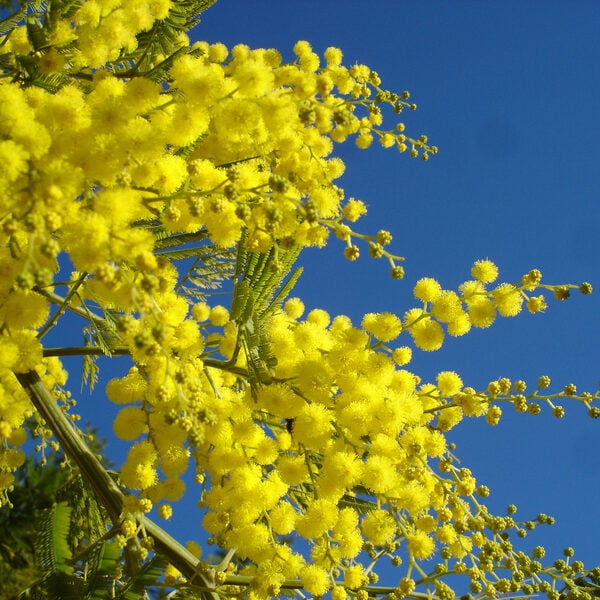Pinus sylvestris Aurea . (Golden Scots Pine)
£175.00 incl. VAT
A familiar part of the British landscape with its blue/grey needles, orangey bark and sculptural shape. A mature one of these, growing on its own, is one of the world’s most beautiful things.

Hardiness level Green
Beautiful golden-yellow cultivar of the Scots Pine, with all the hardy and fuss-free qualities you’d imagine from a tree found naturally growing up to the Siberian Arctic Circle.
Conifers can be rather morose and heavy en masse but this golden variety is full of light and texture. We adore it. Makes a very distinctive and eye-catching specimen tree in a smaller garden and fantastic contrast among any mixed group of evergreens where the golden blur of its fuzzy form adds light and softness. Remaining dense and compact throughout its (long) life, Pinus sylvestris ‘Aurea’ holds onto its very neat oval-ish and pyramidal shape and grows slowly. This makes it ideal for container growing on a balcony or in a courtyard (a pair to flank an archway, or framing a door is quite grand) and for adding height and shape to a rocky alpine garden, or dotting-about a formal garden where symmetry is paramount but where you’re perhaps getting rather bored of heavy greens. The brilliant gold needles will ombre into a lemony-lime fuzz as they mature, ensuring year-round interest and variety and avoiding the somewhat static and changeless effect of some other conifers. A definite (Gold) winner, we reckon.
These colours are at their best when it's planted in full sun, so find the brightest spot for it. Not fussy at all about soil as long as it’s not boggy.
N.B. When clipping several plants with the same tool, have a bucket containing a 5% bleach solution and swish your blades around for 30 seconds between plants to sterilise them. This will help avoid the chance of cross contamination of disease.
As with all woody plants, plant high, exposing as much of the taper at the base of the trunk as possible. Allowing soil to accumulate round the base of a tree can be fatal. Keep very well watered when first planted.
Additional Information |
|
|---|---|
| Size | |
| Light | |
| Plant Type | |
| Continent of Origin | |
| Specialist Plants | |
| Tree Size | |
| Situation | Coastal, Exposed (To wind and sun), Mild City Gardens, Seaside, Sheltered Garden |
| Hardiness | |
FAQs
How fast does Pinus sylvestris ‘Aurea’ grow?
Could reach 40ft over 30 years.
How do you take care of Pinus sylvestris ‘Aurea’?
Position in lots of light, as exposed as you like and reasonably well drained soil. Good in coastal but not sea-side locations.
How tall do Pinus sylvestris ‘Aurea’ grow?
Could reach 40ft over 30 years.
Do Pinus sylvestris ‘Aurea’ prefer sun or shade?
Position in lots of light, as exposed as you like.
Is Pinus sylvestris ‘Aurea’ an indoor or outdoor plant?
Outdoor

















